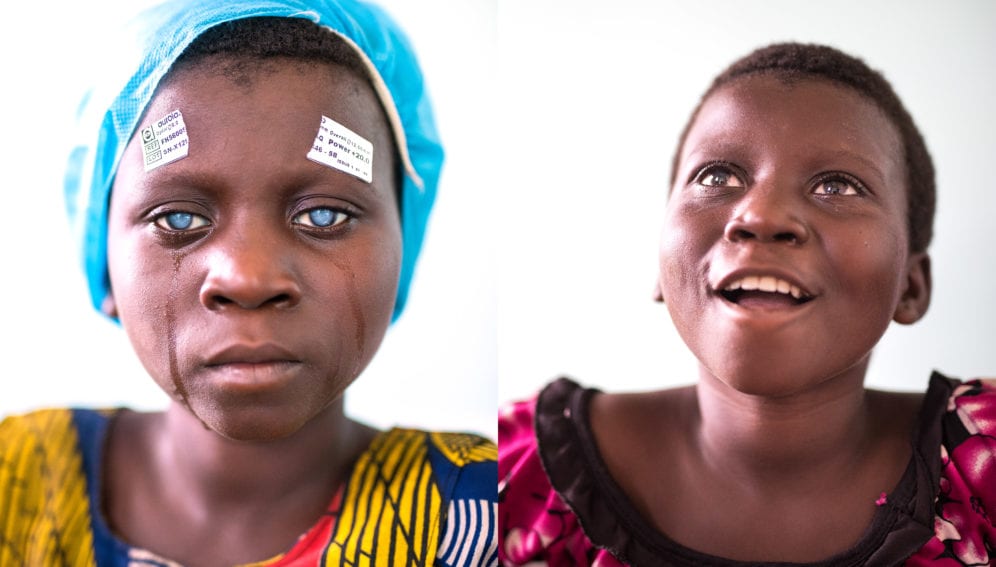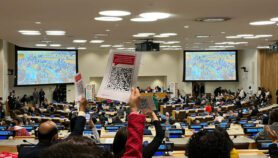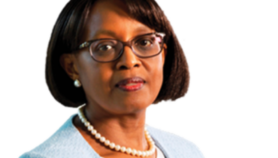18/10/19
One billion people have preventable blindness globally

By: Royal Uche
Send to a friend
The details you provide on this page will not be used to send unsolicited email, and will not be sold to a 3rd party. See privacy policy.
[LAGOS] About one billion people are living with preventable vision impairment globally, making the need for stronger incorporation of eye care within national health services urgent, says a WHO vision expert.
The expert’s remark follows the release of the world’s first WHO report on vision last week (8 October).
Vision impairment is the loss of part or all of one’s ability to see. It reduces a person's capability to function at and participate fully in the workforce.
“People who need eye care must be able to receive quality interventions without suffering financial hardship.”
Stuart Keel, WHO
According to a study, unlike wealthy countries where blindness are commonly below 0.5 per cent, most developing world countries lack specialists in the study and treatment of disorders and diseases of the eye, have few eye hospitals and are unable to meet costs associated with procuring and maintaining diagnostic equipment.
The WHO report adds that the global goal to reduce eye impairment by 25 per cent by 2019 has been constrained by challenges such as uneven quality of eye care services and inequalities in coverage, with blindness in both eyes for people in South Asia, West Africa and East Africa being eight times that in high-income countries.
“There is currently a shortfall of health services research and implementation research in the field of eye care [that] also hampers the evidence-based planning of eye health programmes and services,” says Stuart Keel, a WHO expert on vision impairment. “People who need eye care must be able to receive quality interventions without suffering financial hardship.”
The WHO Africa region estimates that 26.3 million people have a form of visual impairment on the continent, with 20.4 million having low vision and 5.9 million being blind. Africa is estimated to have 15.3 per cent of the world's blind population.
Major drivers of visual impairment globally include ageing populations, limited access to eye care, lack of integration of eye care in the health sector and inadequate workforce, adds Keel, a professor of ophthalmic epidemiology at the University of Melbourne in Australia.
The first report reveals that vision impairment burden is often far greater in rural areas populations.
Keel tells SciDev.Net that unless $14.3 billion is provided immediately to address the backlog of one billion people living with vision impairment or blindness, the global need for eye care will increase dramatically in the coming decades, posing a considerable challenge to health systems.
The report, he explains, draws on the existing evidence, details current challenges facing the eye care sector and provides recommendations for action, adding that it took two for consultations with experts and a further nine months to write the report.
While the main target audience are policymakers, Keel says, the WHO is developing a cost-effective package of eye care interventions to facilitate the integration of eye care into the health sector and into ensuring that populations can access quality healthcare services without suffering financial hardships.
Keel says calls for research into the most effective approaches to improving the uptake of cataract surgery among disadvantaged groups and the integration of eye care into primary eye care services.
Oziengbe Okonokhua, president of Nigerian Optometric Association, agrees, and tells SciDev.Net, that countries need to integrate primary eye care into existing primary healthcare structure and make eye care a major concern as is the case for diseases such as malaria and HIV/AIDS.
Okonokhua says that to derive maximum benefits from the report, eye care services must be taken to patients.
“Primary health care centres across Africa must have at least an optometrist who is able to render comprehensive eye care services at the community level of care,” he adds.
This piece was produced by SciDev.Net’s Sub-Saharan Africa English desk.
References
World report on vision (WHO, 8 October 2019)













